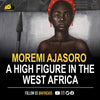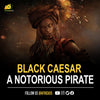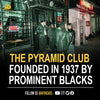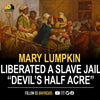‘Long, Long Ago, Benin had the first street lighting in the world. Then called Edo, as far back as the 9th century, the blueprint of the city was designed using fractal mathematics when that science hadn’t even been ‘discovered’ yet. Public health, animal rights & environmental science were high on the Benin agenda. Every house had its freshwater supply, and according to 17th-century Dutch biographer Olfert Dapper,“the city’s main streets, which ran at right angles to each other, had underground drainage made of a sunken impluvium with an outlet to carry away stormwater. Much narrower side and intersecting streets extended off them. In the middle of the streets were turf on which animals were fed.”
Dapper adds that wealthy residents kept their house walls “as shiny and smooth as any wall in Holland can be made with chalk, and they are like mirrors.”
When the Europeans first came to Benin, they carried gifts & bibles and bowed before Oba Ewuare The Great. In the mid--1400s, the Oba was considered The Human Leopard, and the leopard was considered a symbol of the Oba. Their hunting was a taboo, and Leopards were seen walking around the Oba’s private court, answering to none, other than the Oba himself, who shared the same spirit and mind with the creature.
Benin was royal, not only in regalia but in mindset & outlook. The early foreign explorers’ descriptions of Benin City portrayed it as a place free of crime and hunger, with large streets and houses kept clean; a city filled with courteous, honest people, and run by a centralized and highly sophisticated bureaucracy.
People treated each other with such refinement, that In 1691, the Portuguese ship captain Lourenco Pinto observed:
“Great Benin, where the king resides, is larger than Lisbon; all the streets run straight and as far as the eye can see. The houses are large, especially that of the king, which is richly decorated and has fine columns. The city is wealthy and industrious. It is so well governed that theft is unknown and the people live in such security that they have no doors to their houses.” In contrast, London at the same time is described by Bruce Holsinger, professor of English at the University of Virginia, as being a city of “thievery, prostitution, murder, bribery and a thriving black market made the medieval city ripe for exploitation by those with a skill for the quick blade or picking a pocket”.
In that royal tradition, Benin’s 16,000 km Great Wall remains the largest manmade infrastructure before the industrial era and the largest single archaeological phenomenon on the planet.The Benin Wall System was originally speculated to be four times longer than the Great Wall of China until a recalibration of the China wall by Chinese surveyors put their great wall at around 21,000 km.Still, the Great Wall of Benin consumed a hundred times more material than the Great Pyramid of Cheops and took an estimated 150 million hours of digging to construct, until they were bombarded away by the British Navy in 1897, after several years of attempting to breach the royal kingdom.
The looting of the Benin Royal Palace followed, and 1000s of bronzes and other sculptures now remain in museums in London, France, the Netherlands, Belgium & the USA, and in auction sales for half a million dollars-a-piece or more.With such impeccable & incredible detail, Benin & later, Ife Bronzes, are the most refined metalwork in the ancient world, their technology, artistry & sophistication unequaled in the west until maybe the 19th century, and significantly predating the European renaissance.Till today, Benin bronzes rank among humanity’s greatest artistic achievements.







